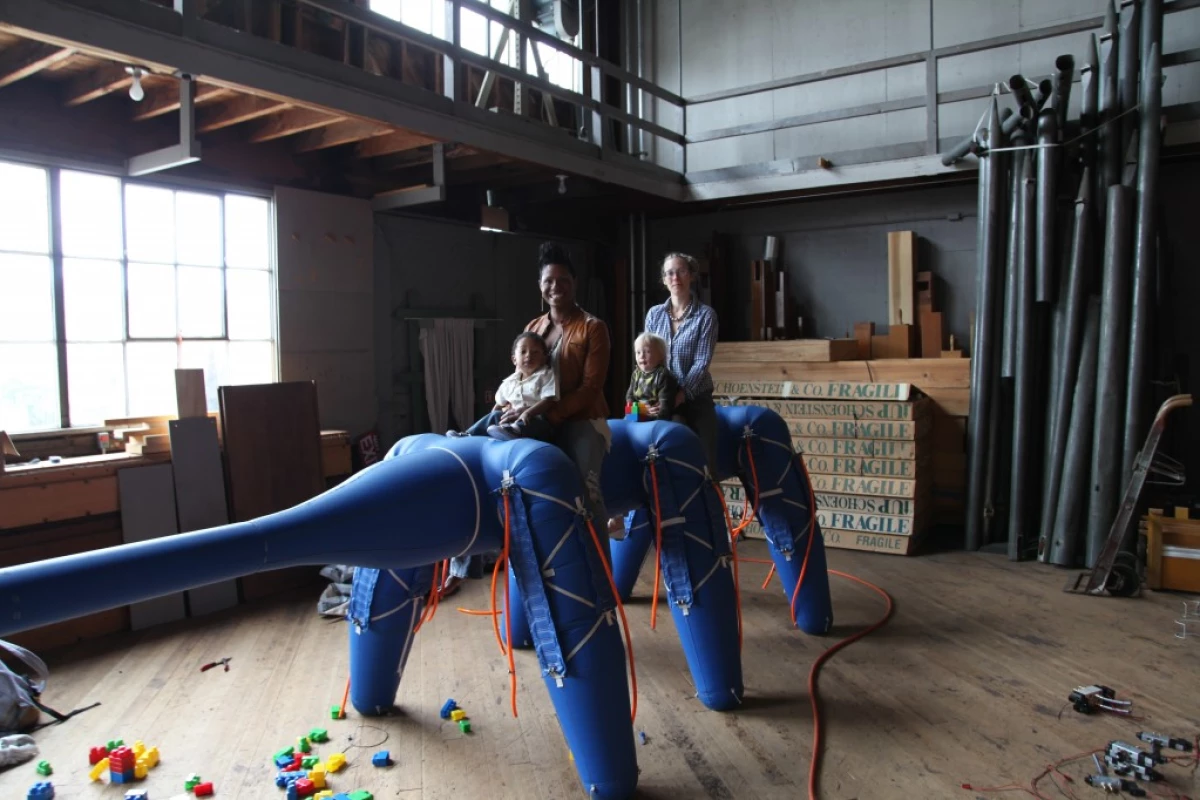What weighs a little under 70 pounds, has six legs, and is full of air? No, it's not conjoined monkey triplets with gas - as you've doubtless already gathered from the picture, it's a walking inflatable robot known as Ant-Roach. Earning its name by looking like a cross between an anteater and a cockroach, the wonderfully-kooky beast is the creation of San Francisco-based engineering/design group Otherlab. Besides providing amusement, the device was built to showcase the high strength-to-weight ratios and carrying capacities that are possible with inflatable robots.
Although Ant-Roach is 15 feet (4.6 meters) long and can easily support the weight of several human riders at once, its sub-70-pound (32 kg) weight allows it to still be carried by one person - when it's deflated.
Its legs move due to built-in textile-based actuators, that contract upon inflation. That inflation, in turn, is made possible by several central manifolds, that dispense compressed air through pneumatic piping. The movements of the robot are dictated by an onboard microcontroller that wirelessly receives a signal from a laptop, which is running a control program.

Besides being strong yet light, portable, and able to carry heavy loads, inflatable robots would also likely be relatively inexpensive to produce on a commercial scale. Plus, at least in the case of Otherlab's example, they float on water! The technology shows enough promise that the Defense Advanced Research Projects Agency (DARPA) provided some of the funding for the development of Ant-Roach.
The video below shows the robot being put through its paces.
Source: Hizook








